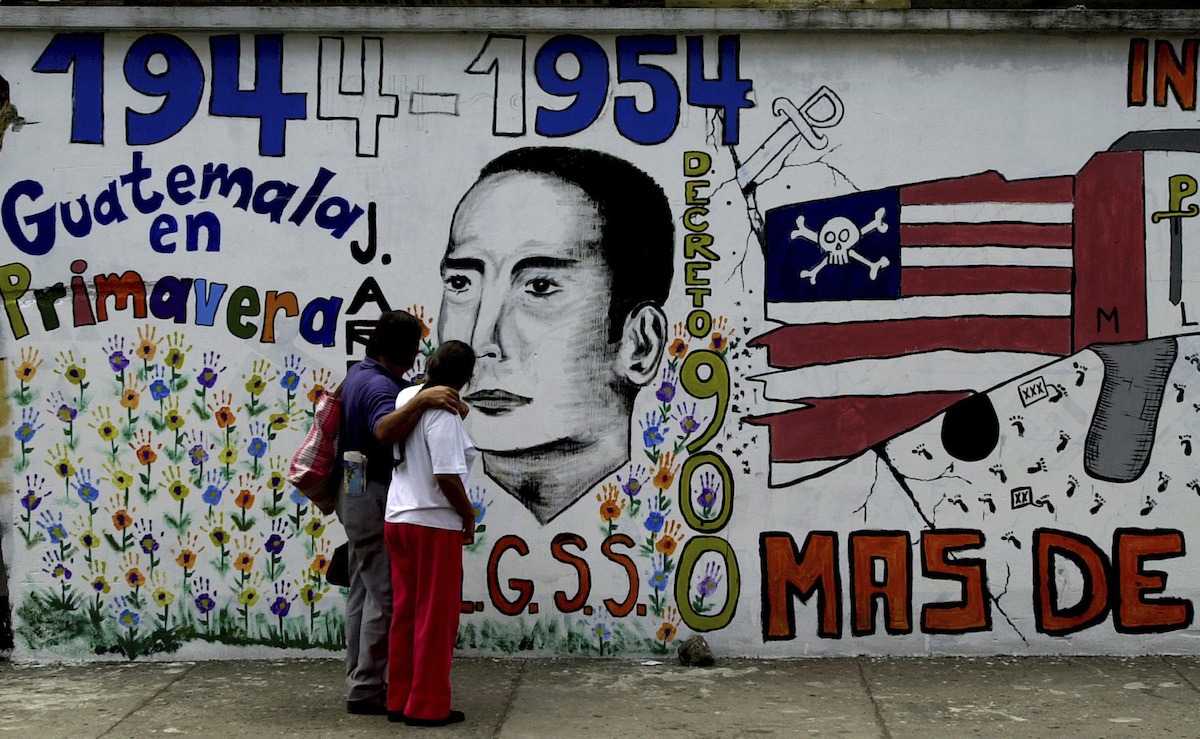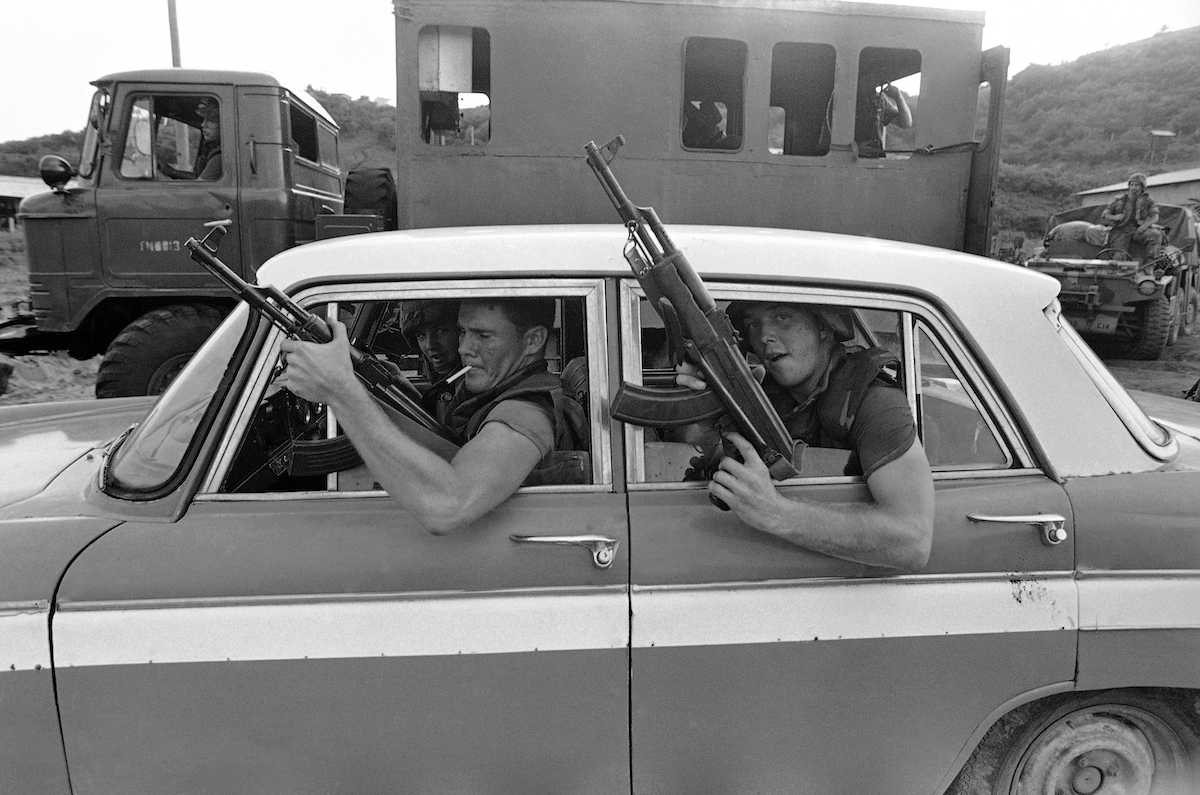Venezuelan President Nicolás Maduro accuses the United States of trying to orchestrate a coup against him, and that allegation has resonance among many in a region where Washington has a long history of interventions—military and otherwise.
Ever since President James Monroe announced a sort of protectorate over the hemisphere in the early 19th century known as the Monroe Doctrine, the United States has involved itself in the daily affairs of nations across Latin America, often on behalf of North American commercial interests or to support right-leaning forces against leftist leaders.
That military involvement petered out after the end of the Cold War, although the U.S. has been accused of granting at least tacit backing to coups in Venezuela in 2002 and Honduras in 2009.
The Trump’s administration leading role in recognizing Juan Guaidó as the interim president of Venezuela returns the U.S. to a more assertive role in Latin America than it has had for years.
Some of the most notable U.S. interventions in Latin America:
1846: The United States invades Mexico and captures Mexico City in 1847. A peace treaty the following year gives the U.S. more than half of Mexico’s territory—what is now most of the western United States.


This file photo of a painting depicts street fighting during the siege of Monterey, Mexico in September 1846 during the U.S. War with Mexico.(U.S. Army Signal Corps via AP, File)
1903: The U.S. engineers Panamanian independence from Colombia and gains sovereign rights over the zone where the Panama Canal would connect Atlantic and Pacific shipping routes.
1903: Cuba and the U.S. sign a treaty allowing near-total U.S. control of Cuban affairs. U.S. establishes a naval base at Guantanamo Bay.
U.S. Marines repeatedly intervene in Central America and the Caribbean throughout the first quarter of the 20th century, often to protect U.S. business interests in moments of political instability.


In this May 13, 2008 file photo reviewed by the U.S. military, a U.S. Army soldier looks through binoculars while standing on a guard tower at Camp 4 in the Guantanamo Bay US Naval Base in Cuba. (AP Photo/Rodrigo Abd, File)
1914: U.S. troops occupy the Mexican port of Veracruz for seven months in an attempt to sway developments in the Mexican Revolution.
1954: Guatemalan President Jacobo Árbenz is overthrown in a CIA-backed coup.


In this June 16, 2004 file photo, a couple walks by a mural in downtown Guatemala City, on the 50th anniversary of a CIA-backed military intervention in 1954 that ousted leftist President Jacobo Árbenz in Guatemala. Four years later, a military insurrection gave way to what later became a guerrilla movement that for 36 years tried to overthrow the military regimes that ruled Guatemala until well into the 80’s. (AP photo/Rodrigo Abd, File)
1961: The U.S.-backed Bay of Pigs invasion fails to overthrow Soviet-backed Cuban leader Fidel Castro but Washington continues to launch attempts to assassinate Castro and dislodge his government.


In this April 1961 file photo, members of Fidel Castro’s militia rest after an operation in an invasion zone in Cuba. (AP Photo, File)
1964: Leftist President Joao Goulart of Brazil is overthrown in a U.S.-backed coup that installs a military government lasting until the 1980s.
1965: U.S. forces land in the Dominican Republic to intervene in a civil war.
1970s: Argentina, Chile and allied South American nations launch brutal campaign of repression and assassination aimed at perceived leftist threats, known as Operation Condor, often with U.S. support.


In this March 24, 1976 file photo, Argentina’s dictator Gen. Jorge Rafael Videla, center, is sworn-in as president at the Government House in Buenos Aires, Argentina. (AP Photo/Eduardo Di Baia, File)
1980s: Reagan administration backs anti-Communist Contra forces against Nicaragua’s Sandinista government and backs the Salvadoran government against leftist FMLN rebels.


In this June 25, 1986 file photo, U.S. President Ronald Reagan appeals to the House of Representatives for their support in approving aid to Nicaraguan rebels in a televised speech from the Oval Office at the White House in Washington, D.C. (AP Photo/Barry Thumma, File)
1983: U.S. forces invade Caribbean island of Grenada after accusing the government of allying itself with Communist Cuba.


In this October 27, 1983 file photo, soldiers brandish captured AK-47 rifles from the windows of a civilian vehicle as they drive near Point Salines Airport in St. George, Grenada. (AP Photo/Doug Jennings, File)
1989: U.S. invades Panama to oust strongman Manuel Noriega.


In this December 26, 1989 file photo, U.S. soldiers take aim while searching suspects detained outside the home of a business associate of Manuel Noriega in Panama City. (AP Photo/Ezequiel Becerra, File)
1994: A U.S.-led invasion of Haiti is launched to remove the military regime installed by a 1991 coup that ousted President Jean-Bertrand Aristide. The invasion restores Aristide.
2002: Venezuelan President Hugo Chávez is ousted for two days before retaking power. He and his allies accuse the U.S. of tacit support for the coup attempt.
2009: Honduran President Manuel Zelaya overthrown by military. U.S. accused of worsening situation by insufficient condemnation of the coup.
***
Follow the Associated Press on Twitter @AP.



Puerto Rico is left out and it is one of the ugliest. Big omission and error. (Puerto Rico, while a US territory is part of Latin America physically and should be included).
There are no coincidences and no “omissions”…only honest, cutting-edge “journo-ism”…
Ay, mi’jo si tu supieras…
What?
No mention of America’s campus leftist-socialist-communist shaggy-haired glamor-darling?
Che Guevara-Lynch, the WHITE Argentinian brutal racist who slaughtered indigenous people like they were target practice!
And told Castro to eliminate all blacks from Cuba?
Too many of his dry-cleaned T-shirts in your IKEA-outfitted closet?
How selective the fake outrage…smh
Feast your eyes…
“Mexicans are mostly a rabble of illiterate indians,” ………………..Ernest “Che” Guevara!
http://babalublog.com/2015/09/04/mexicans-are-a-rabble-of-illiterate-indians-che-guevara-1955/che-mexicans2-2/#main
http://www.azquotes.com/picture-quotes/quote-the-negro-is-indolent-and-a-dreamer-spending-his-meager-wage-on-frivolity-or-drink-the-che-guevara-71-66-38.jpg
What a “rebel” he was…smh